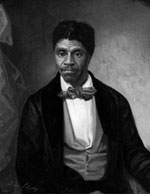Hatton W. Sumners Institute
The institute is divided into three levels, as follows:
101: This 40-hour training begins with an in-depth study of the Declaration of Independence. Participants will then be taken through the ancient and European origins of the U.S. Constitution, followed by the American origins. The training will continue with a famous Federalist debating a famous Anti-Federalist over whether a New York State convention should vote to ratify the Constitution in 1788.
Then attending teachers will be taken on a walk through the seven articles of the Constitution. The remainder of the time will be spent studying the First Amendment and famous Supreme Court cases on the First Amendment, including the current term cases.
The agenda is divided into blocks of time spent with scholars, followed by break-out sessions where activities are demonstrated on the curriculum covered in the scholar sessions.
201: Available to those teachers who have completed the 101 session, the advanced session begins with a look at the "Ladder of the Bill of Rights." The remainder of the three-day, 18-hour institute is spent studying Amendments Two through 10, along with Supreme Court cases decided under each of these amendments. Break-out sessions follow each scholar session with activities on the Bill of Rights.
301: The one-day, seven-hour Update Session is available to those teachers who have previously attended both 101 and 201. Participants will spend most of the time discussing Supreme Court cases that have been decided during the past few years with the scholars. They will also receive a new activity guide, which includes lessons on Federalism and writing.



